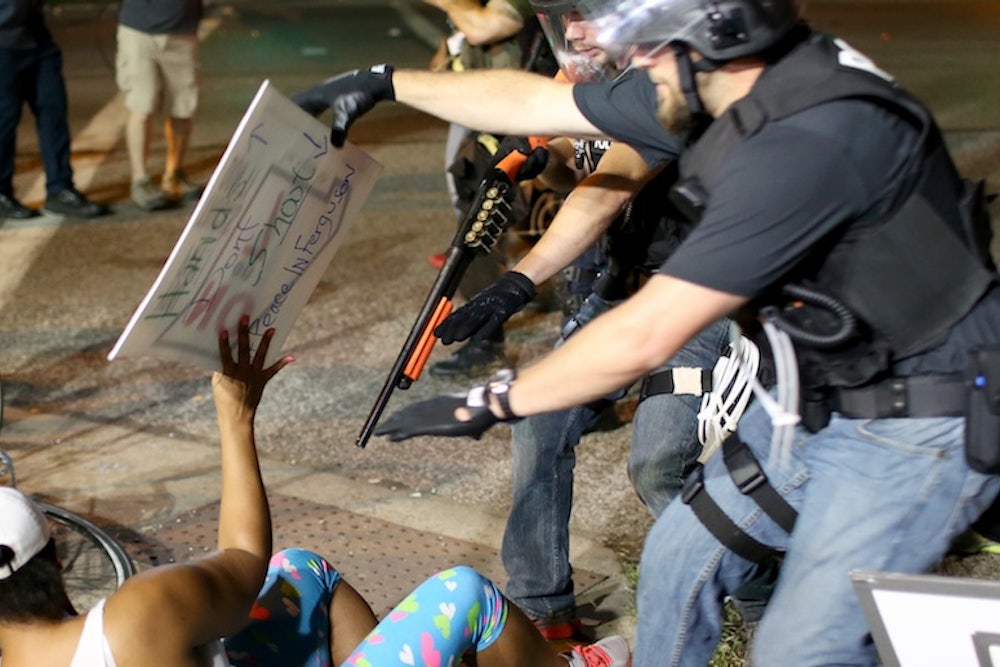If a friend comes to you with money problems, among the first things you are likely to do is ask for their budget. If she doesn’t have one, her “problem” is not taking money seriously. Similarly, when my students tell me they are struggling in a course, among the first things I ask is which part of the syllabus is difficult. If they can’t find the syllabus, I let them know that taking the course seriously should be their first priority.
We have a problem with race and policing in this country. But it too often seems as if we are not taking it seriously. Like our spendthrift friends with no budget and struggling students with no syllabus, we do not know how “bad” the problem of race and policing is. There is currently no national data on police stops or use of force. None.
In the wake of Michael Brown Jr.’s shooting and the events that followed, many have wondered, “How often is this happening?” Those curious enough to seek answers, often find themselves left with a different question: How is it possible for a nation with such a troubling history of discrimination in policing to have no national records of its existence?
The good news is that we may soon have a more satisfying answer to this question. Progressive leaders in law enforcement have recently called on researchers at the Center for Policing Equity (CPE) to create the first national database on police behavior. That means we will know how many people are stopped, and how often force is used—and against whom. With the help of the National Science Foundation, the Department of Justice, and several philanthropic associations, the goal is to begin issuing reports from the database two years from now, perhaps even sooner. As a lead investigator of the database and president of CPE, I am excited about the insights we can gain about race and policing once we finally create an honest accounting of the issues. I am, like so many others though, troubled by why it has taken this long to make a plan to fix such a long-lasting problem.
Part of the reason for the long delay is that we have a measurement problem. Essentially, researchers have rarely had access to large amounts of data from multiple police departments. When they have, the data sets are incompatible—they cannot be compared against each other. And, even if they could be, we have yet to arrive at a consensus regarding how to analyze data on police behavior to determine whether or not there is actual bias.
This is because disparities are different than discrimination. For instance, recent news reports reveal a consistent disparity between the percentage of people living in Ferguson who are black, and the percentage of people who are stopped by Ferguson police who are black. U.S. News recently ran a story demonstrating that blacks in Ferguson were 1.5 times more likely to be stopped in Ferguson than their representation in the population These data likely reflect a disturbing disparity in Ferguson’s law enforcement outcomes. However, focusing on this disparity alone is a classic case of misleading statistics.
It suggests that police bias is responsible for all of the disparity. But inequality (and even racial discrimination) in education, housing, employment, and healthcare may also drive up crime rates among disadvantaged groups. So, what percentage of any disparity in stops is the fault of direct police behavior and what responsibility belongs to institutions that influence life chances “upstream”—well before any police contact? When one considers that there is no data on what percentage of people stopped in Ferguson actually live in Ferguson, it becomes easier to understand how quantifying the problem can be a headache.
The most effective way to address the measurement problem is to standardize data across multiple departments and compare rates of disparities. This will allow analysts to compare rates of racial disparity across similar urban areas. We can use statistical techniques to hold educational outcomes, housing patterns, employment disparities, and healthcare constant in order to identify the unique role of police in producing racial disparities. Such a database would be an accounting of racial disparity that takes seriously our desire to identify its cause with the goal of reducing it. It would be, for lack of a better term, like making a plan for racial justice in policing.
Again, the good news is that police want a plan.
Of course, data do not ease the minds of parents who have lost their child, and they do not, on their own, keep our streets safer. But, if you have a problem, the very least you can do is keep track of it so that you can make a plan to fix it. Anything less, and you are not taking it seriously.
